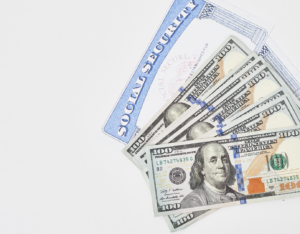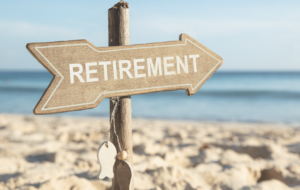Trying to imagine your life after being a business owner can be an exciting but daunting journey. And that destination can be much more daunting than exciting if you don’t know what your cash flow will look like or if you will have enough.
And because you’re an expert at running your business, not selling it, you need the right professionals on your side. Here at Consolidated Planning, our financial professionals understand the nuances and complexities that business owners face and our decades-long journey in helping business owners prepare for life post-sale makes all the difference in retiring the way you want to.
In this article, we’ll help you understand how and why the right management of your cash flow reduces taxes and what spending down your sale proceeds should look like, all to help you make the most of the earnings from your business sale.
The Right Management Of Your Cash Flow Reduces Taxes
Let’s say you sell your business for 10M to a third party. You’ll likely pay capital gains and related taxes upwards of 28%, all in. That’s the federal capital gains rate of 20%, plus state capital gains of around 5%, plus what’s known as the ObamaCare tax of 3.8%.
Rounding to 30%, and assuming you have your tax basis in the business is nearly zero (it probably is), that’s 3M in taxes right there. Leaving you with 7M on your balance sheet to produce cash flow for you.
Most business owners would take that 7M we discussed and pull off 4% every year to invest in bonds, dividend paying stocks, and other securities that produce income – because you now need income from your investments and not just growth from your investments.
At 4% of interest and dividends, that’s $280k every year which is often taxable as ordinary income. The tax on this $280k of income could be $100k, leaving you with $180K each year.
That’s a lot of taxes…
It’s important to note that retirees don’t quite know how long the money needs to last. For two clients aged 65, the average age of the second spouse to die is around age 93. And while that’s nearly 30 years from age 65 to age 93 on average, it’s just average. Half of those same life expectancies will die before age 93, and half will die after age 93.
Does that mean you can just assume to make your money last until only age 93? Probably not – since you need your money to outlast you. Therefore, most retirees just spend the earnings on their account, or in this case spend the $280k each year.
This is the traditional approach, but as you’ll see soon, it’s not your only option.
Another Option To Spend Your Sale Proceeds Down
So what if you take the amount of money after taxes, and instead of living off just the earnings of 280k each year, what if you slowly but surely spend down the account?
In other words, what if from age 65 to age 100 you spend that same 7M account down over time? You amortize the 7M account down over 35 years, but instead of just earnings of $280k a year that you distribute and spend each year, you distribute and spend nearly $360k each year.
That’s a big difference each year.
Keep in mind that the entire $280k is taxable each year, just like we covered earlier. Advantageously, the difference between $360k and $280k is usually a return of your ‘basis’ and is relatively tax free. This means that by spending down the account over 35 years not only are you receiving more income each year – $360k – but you are also receiving more after taxes.
Almost sounds too good to be true.
Thinking about this for a minute, you might reason that you already knew that some of this would happen. You know that if you spend an account down, assuming the same growth rate, you’re sure to receive more income each year on it. It’s economic certainty.
Oftentimes a business owner’s second thought is, “If I spend this account down, then I won’t have it if I live too long.” This is entirely true. But, there is a solution to that problem of running out of money.
Spending Part Of Your Sale Proceeds Down
Breaking up your sale proceeds into buckets can make it much easier to manage. Of the 7M, let’s spend down the 5M really efficiently and allow the 2M to grow. And if you’re not itching for the income from the 2M account, some of the 2M could be transferred to an asset like life insurance to replace the 5M of assets spent down.
These two buckets allow you to have a set amount for income (from the 5M) and a set amount where the money will grow and be deferred if you live a long life well past the ‘spend down’ period.
By being deliberate and intentional with the ways you spend your money, you can drastically change your income picture in retirement.
Manage Your Cash Flow To Maximize Your Post-Sale Income
If you’re like most business owners, you are focused on the big number that is your sale price. That makes sense, but it’s wise to review what your cash flow will look like AFTER you sell your business.
Doing so allows you to better gauge if it makes the most sense to sell your business, or not. Sometimes, a sale isn’t fiscally viable compared to its worth in simply remaining in operation.
To truly understand what your post-sale income will look like, you need to look below the surface of what’s obvious.
To learn more about how spending your money the right way can create MORE income for you, talk with an experienced business planning advisor at Consolidated Planning.
2024-167731 Exp. 1/2026
Guardian, its subsidiaries, agents and employees do not provide tax, legal, or accounting advice. Consult your tax, legal, or accounting professional regarding your individual situation. The information provided is based on our general understanding of the subject matter discussed and is for informational purposes only.
This material contains the current opinions of Neal Brincefield and Consolidated Planning only. These are not the opinions of Park Avenue Securities, Guardian, or its subsidiaries.






